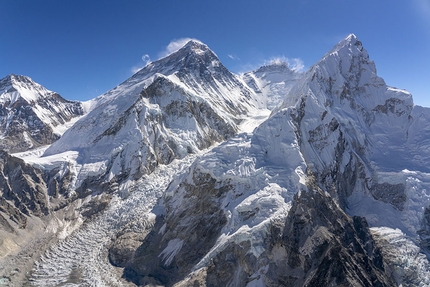Luza Peak in Nepal first ascent by young Sherpa team
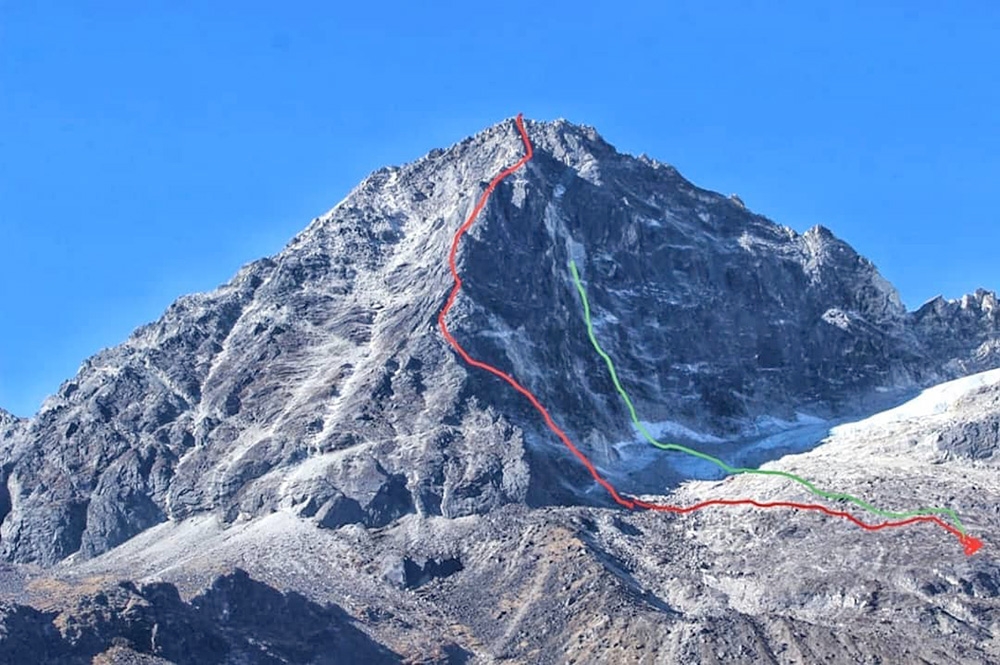
 1 / 12
1 / 12 Pemba Sharwa Sherpa archive
Pemba Sharwa Sherpa archive
Project Luza Winter was a plan that Urken Sherpa and I originally came up with. Our project got delayed because of our tight work schedule, but in 2020 expeditions and commercial guiding to almost all 8000ers were cancelled. As a result of Covid the mountains got a break and so we came up with the idea of exploring and attempting difficult new lines on Luza peak. We teamed up with Lhakpa Gyaljen Sherpa, at 26 a young and rising mountain guide from Phortse, in order to climb as a team of three. Lhakpa has already climbed Everest, Cho Oyu, Ama Dablam and Cholatse as well as many other smaller peaks.
Project Luza Winter was a joint expedition of independent Sherpa youths from a village called Phortse, aiming to uplift our climbing standards as a professional climbers although we are not IFMGA or AMGA certified. 29-year-old Urken Lendu Sherpa is a freelance mountain guide with plenty of experience, from fixing routes on K2 to the North Ridge route on Ama Dablam. Everest, Lhotse, Manaslu have been his playgrounds, with multiple ascents in the past. Like Urken, I myself am a freelance mountain guide and an adventure seeker. I started my climbing career with an Everest expedition in spring 2012. I have climbed two other 8000ers, Lhotse & Manaslu, as well as Ama Dablam, Kyajo ri and many other smaller peaks. I also instruct ice climbing course at Khumbu Climbing Center every winter. Furthermore, I have climbed several peaks in Alps including Ortles, Weisskugel, Castor, Pollux, Grand Paradiso and Weisshorn. Together we have a strong bond of brotherhood, that stems from working together on Everest, to climbing frozen waterfalls in winter, to rock climbing trips & slacklining in summer. And sharing and chasing our dreams together.
Phortse is a Sherpa village in Khumbu located at an altitude of approximately 3,840 meters. Our village is the place with highest concentration in the world of Everest Summiteers. Currently we have total of 83 Everest summiteers! Each house has got at least one person who has already summited Everest and in some families up to four men have summited. And this number grows every year. Mountaineering has now become the main occupation for people from here, and since almost all men aged 16-60 leave for months on big expeditions, the village is looked after by women, kids and the elderly. Potatoes and buckwheat are our main crops, but we also grow vegetables such as cabbage, carrots, spinach, cauliflower etc.
Luza is pyramidal peak in the Khumbu region standing at 5,726m. It lies on the same range of Khumbiyulha which follows on to Machhermo peak further on to the north. Until our ascent, it was listed as one of the Unclimbed peaks of Nepal. It once used to be snow capped but over time and with the impact of climate change, it has become an exposed rocky peak.
We had a successful and a very productive week-long expedition. We established basecamp at 4900m; this received the early sun which would wake us up at around 7am, but would leave the camp after 13.00.
We had few different options in mind but it was a couloir on the North East Face of Luza that first caught our attention. This face never sees a sun, so we started up early. We had to traverse the glacial snout of the Luza glacier to reach the base of our planned route. We then multipitched four sections following the rocky outcrops. It was super fun to try our tools on crags and trad gear. As we climbed further, we began to tackle more loose and unstable slabs and at one point we decided to rappel back using the rock bollards. It was a wise decision to wrap up considering the risk factor.
Our second option was to climb via South East face and follow the ridge to reach the summit and the following day we started up even earlier to explore the south east face. The early sunlight warmed us, as well as our camera gear. An hour long moderate climb on loose scree and moraine led us to a fine rock face. This has approximately 150 meters high and led us to the main south east ridge which, in turn, took us to the summit. This was the best part of our climb. Moreover, it was really exciting to climb a new line as a team of best friends. Following the loose ridgeline to the summit proved tricky, nevertheless we managed to find enough time to film our ascent and reach the summit around 11.30 a.m.
We spent about an hour on the summit. The top of Luza gave us a 360° panorama across the whole Khumbu, part of Rolwaling and on into Tibet. We could make out four 8000ers: Everest, Lhotse, Makalu & Cho Oyu, as well as many other 7000ers & 6000ers including Gyajung Khang, Pumori, Changtse, Lola, Nuptse, Baruntse, Amadablam, Tengkrekitau, Kyajo Ri, Nangpaigosum etc.
The descent proved even more exciting. We followed the south west ridge on our way down, looking for possible descents, but it appeared trickier with lots of loose and unstable slabs. We had to be very careful not to trigger rockfall. Somehow we managed to return to basecamp before dark. It had taken us almost the same time for us to ascend as to descend, and it had been a long day out in the mountain.
Our cook had been more anxious and worried about us than we were during this project. We had focused on establishing a moderate climb for trekkers or rock climbers, but we concluded that this is not ideal for beginners. Climbers with enough experience can follow the south east face in order to reach the SE ridge and follow this to the summit. We recommend to take plenty of cams & nuts to make the climb more fun.
Our objectives and goals were: practice and promote eco friendly expedition and sustainable climbing (Leave no trace climbing); provide a positive message to the climbing community and the rest world that we, Sherpas don’t just climb to earn a living. We climb for ourselves as a passion, for fun, as a hobby and self growth; raise awareness about sustainable climbing, global warming & climate change and its impacts bearing in mind our experience on Luza peak; promote the untouched, unexplored and unclimbed peaks of Nepal and winter tourism following necessary protocols; motivate newer generation of Sherpa youths and climbers to explore new routes and new peaks. Overall we had a very productive expedition on Luza peak, exploring new possible routes, revising our technical skills, sharing our knowledge and skills and helping each other.
Extreme Climbers Treks & Expedition was our official partner and sponsor for permits and paperworks. We also had a few individual friends who supported us with funds to make our project possible. Thanks to our sponsors: Greg Paul, Utah, Mark Icuss, Chicago, Ostrya Equipments, Montreal, Canada, Wild Yak Gears, Nepal. Thanks also to Conrad Anker for arranging the necessary climbing equipment.



 Copia link
Copia link

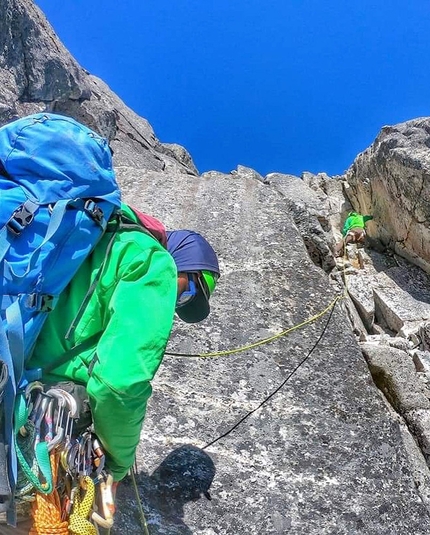
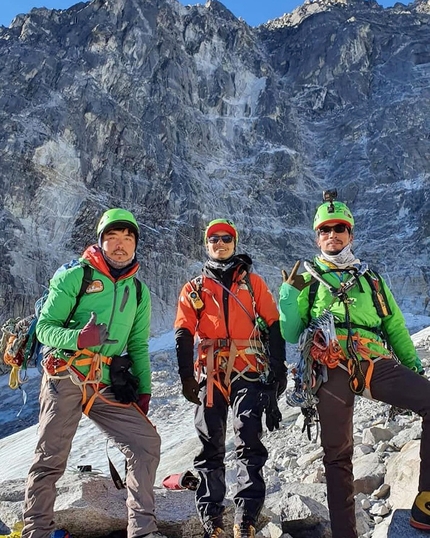
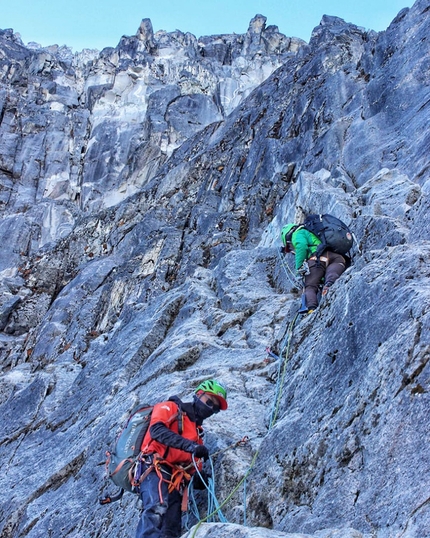
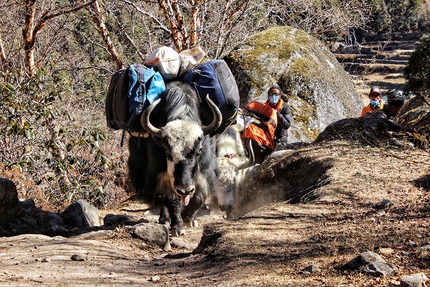
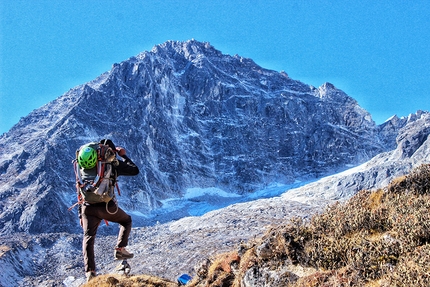
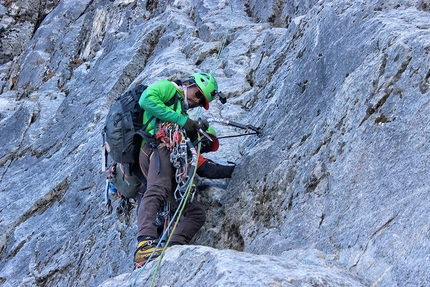
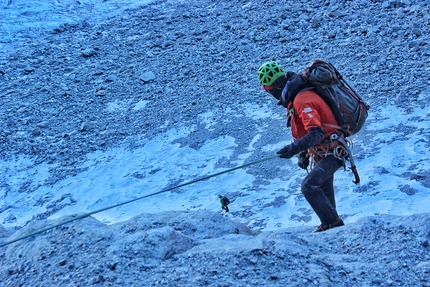
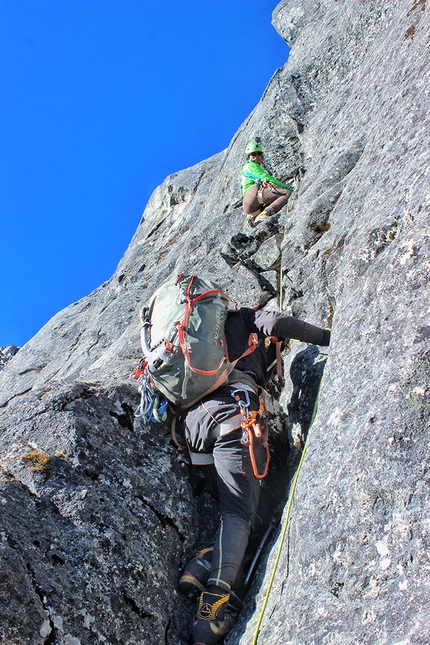
 See all photos
See all photos
